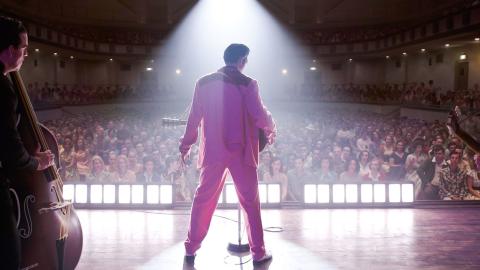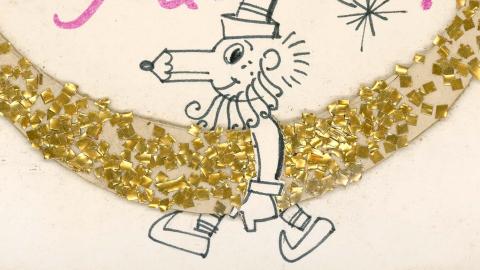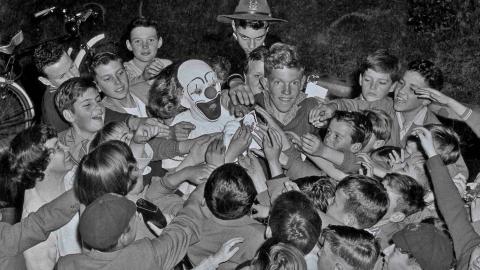
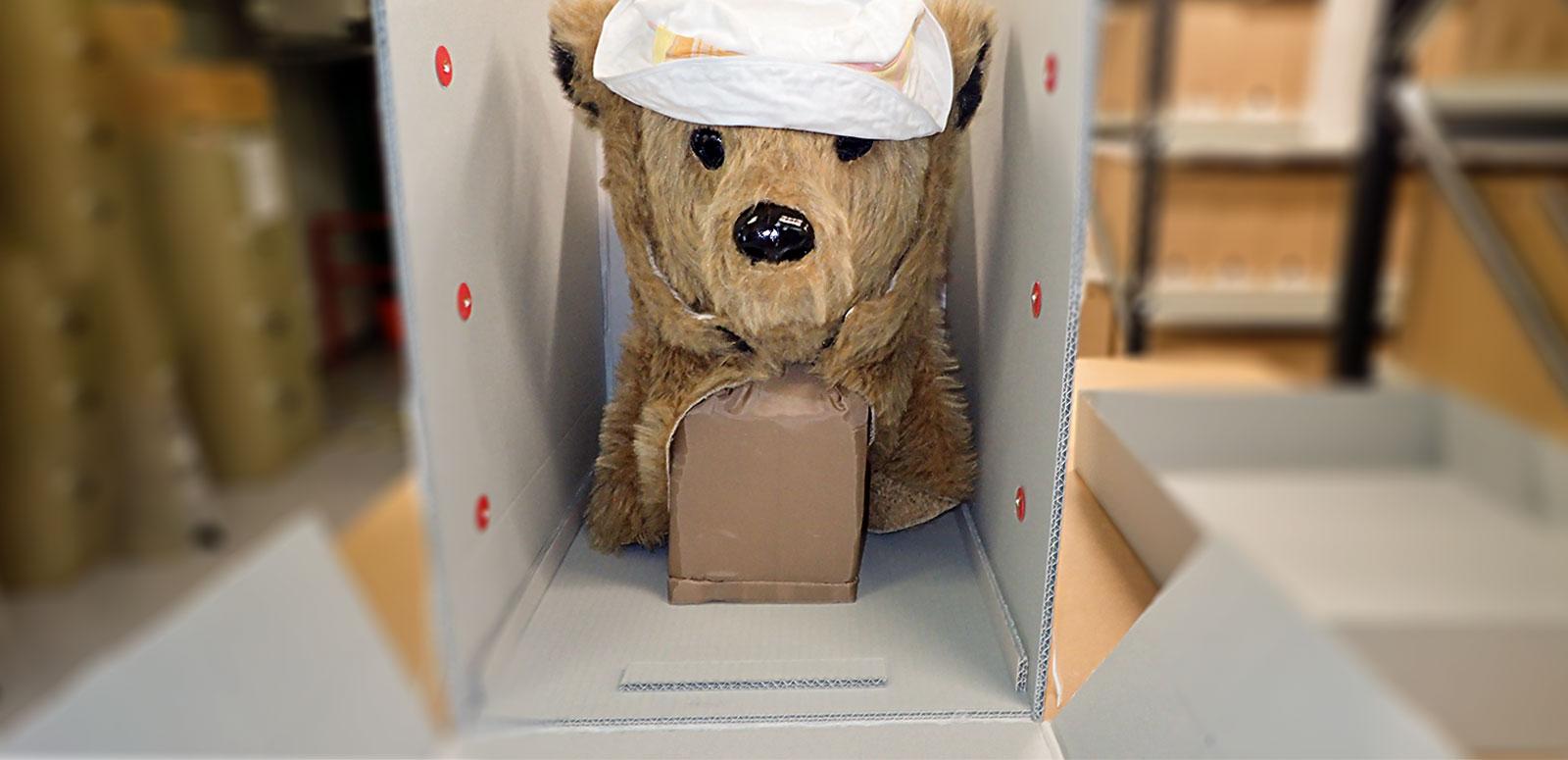
Fredd Bear Costume
The NFSA acquires the 1970s Fredd Bear TV costume
A much-loved children’s television character from the late 1960s and early '70s has arrived at the NFSA.
Fredd Bear, star of The Magic Circle Club, Fredd Bear’s Breakfast A-Go-Go and The Fredd Bear Show, now has a new home.
Donated by Network TEN in Melbourne, the famous costume worn by Fredd’s creator Tedd Dunn has arrived at the NFSA for conservation treatment and storage.
Introducing Fredd
Fredd Bear, a lively non-speaking bear character performed by Tedd Dunn, was first seen on the ATV Channel 0 (now ATV-10) children's television show The Magic Circle Club (1965–67).
From 1969 to 1972, Fredd reappeared on ATV 0 as co-host of Fredd Bear's Breakfast A-Go-Go alongside Judy Banks. The show was a mix of cartoons, music clips, news and general entertainment for children and was broadcast five days a week.
Unfortunately, the video tape of each show was reused the following day. Consequently there is almost no existing record of the program, and what does exist is mostly of poor quality.
The following footage contains snapshots from the show that give you a good idea of its format and tone:
Fredd Bear's Breakfast-A-Go-Go (promotion), c1972. Courtesy: Network TEN. NFSA title:1468878
Conservation Treatment for Fredd
Fredd arrived at the NFSA’s Melbourne office stored in his own special bag with a selection of three coloured bow ties – green, pink and blue – and a white handkerchief.
Tedd Dunn was 193 cm tall so the costume is very large. The head and body of the costume were transported separately.
After travelling to NFSA Headquarters in Canberra, conservators Shingo Ishikawa and Lisa Russ gave Fredd the royal treatment. The expertise of NFSA conservators ensures the preservation of collection items including numerous costumes from film and television like Fredd's.
Upon inspection, Shingo and Lisa noted a loose button on the costume, stains on the bow ties and a carpet beetle larvae casing.
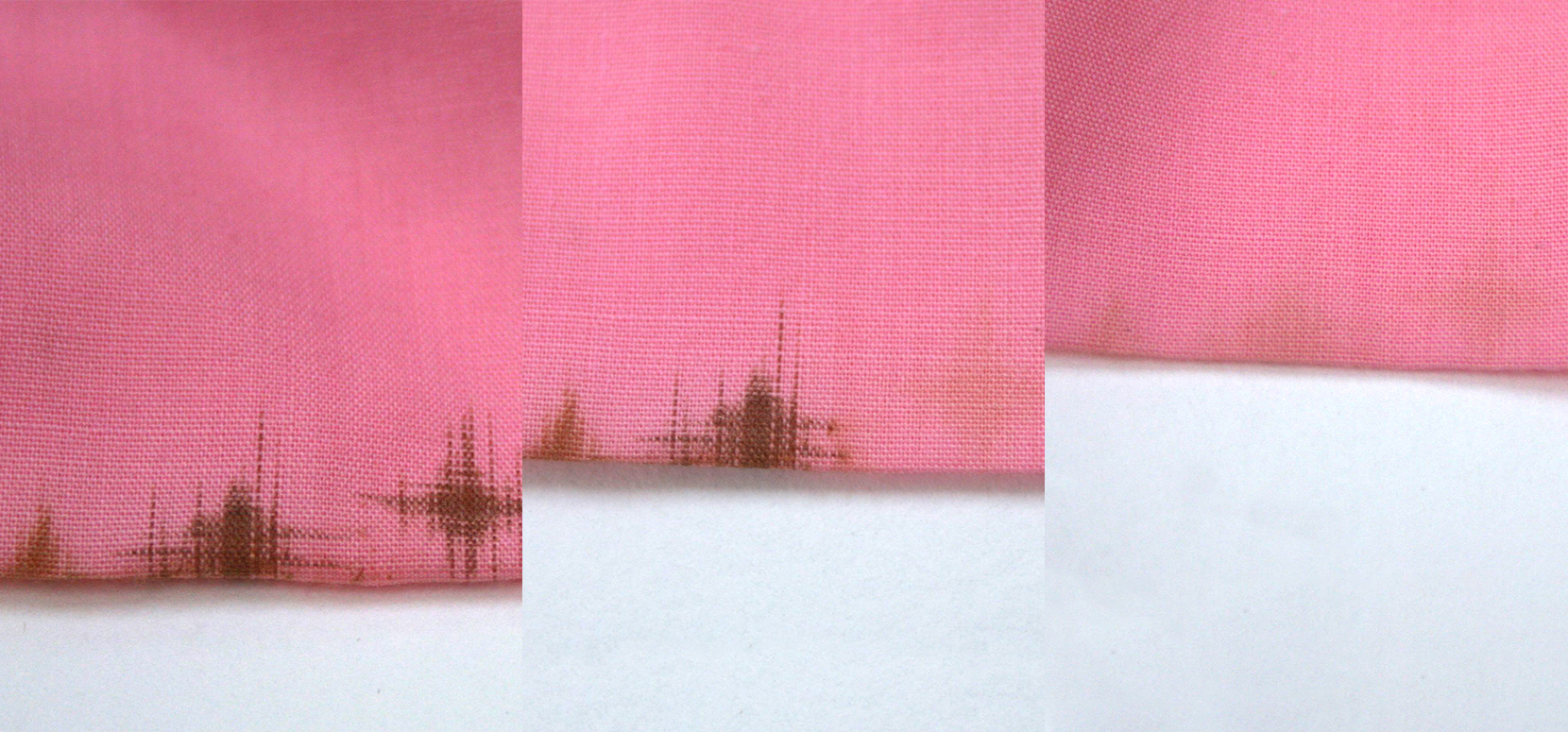
The costume was sealed in plastic and placed in a freezer for three weeks as a safety precaution. Sealing items in plastic before freezing them protects them from condensation; similarly, once removed from the freezer, Fredd remained in his packaging until he returned to room temperature to prevent moisture condensing on the costume.
Once thawed, Fredd received a brush vacuuming to remove any debris and the button was sewn back on.
Shingo and Lisa successfully treated stains on the dark bow tie with deionised water (pictured above).
Fredd's New Home
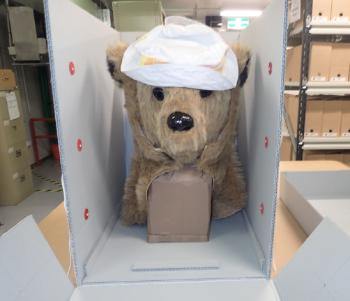
While Fredd was undergoing conservation treatment, Lisa was also working on the tricky task of designing a special box for Fredd’s head.
She used double-wall, conservation-corrugated cardboard for both the main box and roof. Inside, Fredd’s head sits on an ethafoam support, covered in a copper-coloured plastic film.
Meanwhile Teilo Nicholls and Murray Kirkland from the NFSA Collection Services team were tasked with storing Fredd’s body safely.
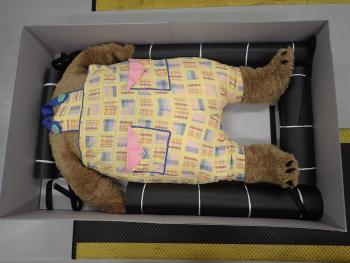
The main box was made of double-wall, conservation-corrugated cardboard, while the roof was single-wall, conservation-corrugated cardboard with external supports with conservation cardboard.
The internal supports are made of polyethylene foam to ensure Fredd is snug and well supported. These specially constructed boxes will ensure the costume's preservation for long-term storage.
Conservation and storage of collection items like the Fredd Bear costume ensures they will be preserved for research and enjoyment by future generations in the decades to come.
The National Film and Sound Archive of Australia acknowledges Australia’s Aboriginal and Torres Strait Islander peoples as the Traditional Custodians of the land on which we work and live and gives respect to their Elders both past and present.
